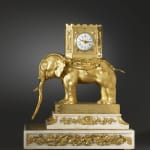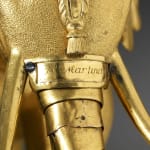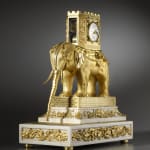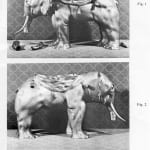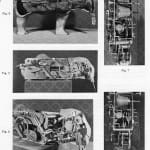Hubert Martinet
Further images
Literature
Geoffrey de Bellaigue, "The James A. de Rothschild Collection at Waddesdon Manor", 1974, vol. I, p. 141, illustrating a Martinet elephant automaton with musical movement in the Rothschild Collection at Waddesdon Manor. Natalia Ladyka, "Inventaire du Château Royal de Varsovie de 1795", 1997, illustrating an automaton clock of near identical design. Derek Roberts, "Mystery, Novelty and Fantasy Clocks", 1999, p. 190, pl. 15-31 A, B, illustrating an almost identical clock, likewise signed Martinet London on the dial but not on the top of its trunk and excluding the ornate mounted white marble base.
A very important and rare George III gilt bronze and white marble automaton elephant clock by Hubert Martinet, signed Martinet London on the white enamel dial and engraved Martinet on the top of the elephant's trunk, the dial with Roman and Arabic numerals and a very fine pair of gilt brass hands for the hours and minutes, the fusee clock movement of eight day duration with anchor escapement, striking on the hour and half hour on a single bell, housed within the castellated howdah placed upon the back of the elephant.
The high quality English detent automaton movement activated on request to activate thirteen different life-like movements in which the elephant moves its enamel eyes from side to side, flaps its ears, swishes its tail and swings its trunk up and down and from side to side in keeping with the direction of its eyes. A release catch close to the elephant's tail is fixed to the axel, underneath which is a wheel which makes one revolution per animation or movement, a notch in this wheel enables it to stop, being linked to a pinion that turns the connecting rod which activates the naturalistic movement of the tail. Within the head, close to the elephant's ears is a wheel which is linked at a right angle and activates the movement of the ears, in the upper corner of the head is a link which is attached to the vertical movement of the trunk, this is geared via a pinion to a spindle which enables the trunk to swing from left to right and the eyes to follow the same direction.
The trunk mechanism is activated by a spindle that moves from right to left via a cam that is fixed to a wheel linked at a right angle, which in turn is linked to another having an identical cam for the vertical movement of the trunk. The trunk and the tail, which are integrated within the mechanism, are fixed solidly to the outer case work; the trunk is pierced by a brass axel and is fixed at the furthest end. The trunk is composed of interlocking brass rings which are each fixed on the forward edge by a screw and on the other by a pin which penetrates the metal through an oval hole, while every two rings the system is reversed to allow for greatest suppleness of the trunk's movement. The magnificent case composed on a castellated howdah of octagonal form with canted corners, the angles ornamented with entwined laurel leaf sprays to the front and cast with a rosette to each corner of the dial, the howdah on a tassel hung caparison draped over the back of a calf elephant, the caparison extending over the elephant's head to the top of its trunk where a tassel hangs just above Martinet's name, the calf elephant standing squarely on a tessellated gilt bronze plinth on a stepped forward projecting gilt bronze mounted white marble base ornamented on the upper frieze with laurel leaf sprays and acanthus leaves to each corner and on the lower frieze with acorn and oak leaf garlands, on turned feet
London, date circa 1770
Height 48 cm, width 40.5 cm, depth 22.5 cm.
There is an anonymous pen and ink drawing of this clock, dated circa 1770 in the Gabinet Rycin Biblioteki Uniwersyteckie, Warsaw of works noted in the inventory of the Château Royal de Varsovie de 1795. The drawing, which is of almost identical design to this model shows the calf elephant complete with its howdah on its back but leaving the dial aperture blank. While the arrangement of base is almost the same as here, the tessellated base on which the elephant stands is lacking as are the additional mounts on the upper frieze; in addition the design includes foliate spandrels in place of rosettes around the dial. The drawing not only helps confirm the dating of the model but also proves that the Polish King Stanislaw Poniatovski acquired a clock of the same model for his collection.
This magnificent work belongs to a small series of very similar automaton elephant clocks which are indelibly linked to Hubert Martinet and as here are all signed Martinet London. One of these is in the Nathan-Rupp Collection in the Historischen Museum in Basel, another is illustrated in Derek Robert's book while another dated 1778 was sold by the Pelham Galleries. It can also be compared to another noted as in the Topkapi Palace Museum in Istanbul as well an automaton, without clock dial by Martinet in the James A. Rothschild Collection at Waddesdon Manor. The latter signed H. Martinet in imitation diamonds above the trunk of the elephant features a more elaborate case with additional figures and animals. In 1927 Paul Brateau repaired a very similar work by Martinet which he described as a "A curious clock-automaton in the form of an elephant belonging to the Princess Boris Galitzine...signed on the head of the elephant Ht Martinet" (Paul Brateau manuscript notes on clockmakers whose work is preserved in the Conservatoire National des Arts et Métiers, Paris). Another comparable automaton elephant clock, formerly belonging to the Shah of Persia is signed Peter Torkler on the movement (sold by Bonham's London, 28th May 2002). Almost certainly made in London it was fitted with an automaton movement that was in essence identical to the Martinet piece at Waddesdon, indicating that it was probably made by the same maker.
Martinet was active both in London and Paris during the 1770's and 1780's and though little is recorded of his specific activities we know that he worked as both a horloger and a mercier. Martinet is also referred to as a marchand-bijoutier by Geoffrey de Bellaigue who mentions him in connection with a rare gilt bronze and Meissen porcelain elephant clock signed Gudin on the dial in the Rothschild Collection. Bellaigue noted that the inventory of Martinet's stock, drawn up after bankruptcy on 7th June 1777 listed "Trois pendules d'Eléphant finies 5000 [livres]. One of those three clocks, featuring a white porcelain elephant ridden by a black mahout and surmounted by a Turk had belonged to the marquis de Béringhen and though the 1777 statement did not mention any clocks with complicated horological movements or automata there is still the possibility that two of the other three may have been of the present model.
The fact that Martinet worked in Paris is confirmed by his signature appearing on a distinctly French cartel clock (illustrated in Tardy, "La Pendule Française", vol 1. p.86). The duc d'Orléans also owned two of his clocks at the Palais Royal, which were seized by the Revolutionary government in 1793, one of which is probably the same as Martinet's astronomical mantle clocks now in the Musée des Arts et Metiers, Paris. The latter signed Martinet London is flanked by two marble figures while the clock itself features multi-calendar dials surmounted by a lunar dial and an Apollo sunburst. Interestingly it is identical to another of the same design signed Martinet London previously sold by this gallery (illustrated in Richard Redding Antiques", 1991, p. 56).
Throughout history elephants have played an important role within the arts. Known for their strength and as symbols of courage, nobility and honesty they have been replicated since Antiquity. They and other beasts have also had a long history in European horology and automata with numerous examples dating from the late Renaissance. With the Rococo taste for all things Oriental and exotic during the early eighteenth century and also the growing interest in science and animal studies meant that elephants once more became popular motifs of luxury arts. However the real vogue for such automata arose from Europe's growing trade with Asia in highly elaborate and ornamented clocks and watches. Although these works told the time they were predominantly appreciated for their decorative qualities and as some included musical movements they came to be known in China as 'sing-songs'. These highly decorative pieces were often presented by the officers of the European trading companies as gifts to ease trade with the Asian officials. In China for instance singsongs passed through the hierarchy of officials until some were eventually presented to the Emperor and hence found their way into the Imperial Collection.
Since Britain tended to dominate Europe's trade with the East, most of the cargo sailed from London and thus it was here that a thriving practise for such luxury objects took place. One of the most famous to be involved with this trade was James Cox (b. 1723 d. circa 1791) - an ingenious jeweller, goldsmith, designer and inventor who created the most sumptuous jewel encrusted automata and clocks that delighted all of European society. Cox was particularly fascinated by elephant automata and exhibited a number at his museum in Spring Gardens London during the early 1770's. Due to financial difficulties, in 1773 Cox applied to Parliament to sell his museum pieces by lottery and in so doing compiled a lengthy catalogue of his pieces; a number of those included elephants of which one was modelled from one brought from India and presented to the Queen. As here, the elephant which can move its ears, eyes, tail and trunk in the most life-like fashion also appears to have been modelled from life. Indeed the anatomical details and the movement of the present animal are so life-like that it is most likely that it too was modelled from life.
Known for his ingenuity Cox was predominantly a brilliant self-publicist and entrepreneur and though well versed in the art of automata and clock making was unlikely to have actually made the objects himself. Rather he, like others in his trade would have most probably been responsible for their design, overseen their creation and may have forwarded the capital and eventually retailed them but called upon a team of foreign and English expert specialists to make the various parts. It is almost certainly the case that Martinet worked in London in the same capacity, setting himself up as one of the many competitors in this lucrative trade. In contrast to the majority of Cox's creations which are far more exotic and Rococo in orientation, the present case, which though very luxurious is far more restrained in design and as such accords with the prevailing French taste for Neo-classism while still retaining the obvious references to its origin in the form of the English oak leaf garlands. As such it reflects Martinet's understanding of the change in fashions during the 1770's.
Another immigrant who set up in London was Peter Torkler, whose name appears on the elephant automaton clock once belonging to the Shah of Persia. Interestingly it is possible that the latter was the same Shah who was so enamoured by Martinet's automaton elephant at Waddesdon. A newspaper report of 1899 on the occasion of a visit from the Shah of Persia to Waddesdon Manor noted "What struck the Shah's fancy most amongst the costly treasures of the Rothschild collection was a mechanical clock studded with imitation jewels, which is a veritable curiosity, and looks as if it were of Eastern manufacture adjusted to clockwork mechanism by some ingenious artist.........This magnificent toy fairly delighted His Majesty the Shah. It was wound and re-wound again and again, and it was evidently preferred to all the paintings, enamels, armour and Palissy ware in the whole of the Rothschild family. Eventually it became necessary to distract His Majesty's attention from a curiosity of considerable historical interest" (The Bucks Herald 13th July 1899, p. 7). Certainly the Shah's delight in such a sophisticated yet amusing piece is matched today by the present work which is also of significant importance.






